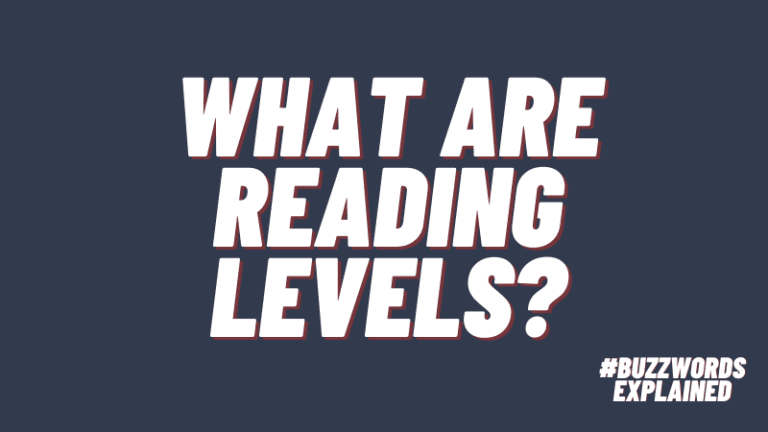When it comes to reading levels and reading instruction, there’s no one-size-fits-all method. After all, our students are unique individuals coming from various backgrounds with different strengths and weaknesses. So how do we ensure they receive the support they need to grow as readers?
We can give students better, more personalized instruction when we know where their skill levels stand. And this is why reading levels can be great … as a place to start.
Get started with more personalized reading instruction in your classroom with LevelUp Reader, a customizable, adaptive reading platform for pre-K through grade 3. Learn more and get your free trial of LevelUp Reader here.
Without a doubt, reading levels are an important part of a comprehensive reading assessment.
A reading-level assessment is one way to measure a student’s level of decoding and comprehension. Factors like word count, number of different words and high-frequency words, word repetitions, sentence length, and complexity give us valuable information about students’ strengths. It also gives us insight into what they need to grow as readers.
When you know your students’ reading levels, you can get the right books into their hands at the right time. Optimally, students should spend 25 minutes or more each day in the “just right” zone. This great article explains the different types of reading levels currently available. A “just right” book is one that stretches the reader just beyond their comfort zone—not so much so that they’re discouraged, but challenging enough for them to grow as a reader.
Reading assessments also provide valuable data for informing instruction. They can be used as a tool to guide reading practices and help students work on areas they may struggle with. Even students who read at the highest level in a class could have weaknesses that need to be addressed to avoid effecting them later in their learning careers.
However, we must be careful that we don’t use reading levels to define or restrict students in any way.
The trouble begins when the emphasis becomes more about the label than the experience. We don’t want to squelch a child’s passion by discouraging them from reading books that are outside of their level. There’s nothing wrong with occasionally picking up an old favorite that is too easy or a book that’s way too difficult because the child is interested and wants to explore.
These researchers explain how important it is to let kids explore their interests, not just their levels. Additionally, when too much focus is placed on levels, kids can feel pressure to perform. When that occurs, it’s easy to view reading simply as a means to an end. And if they develop the attitude that the only purpose for reading is to accomplish a task (increasing their reading level), we’re not helping them become lifelong readers.
Most importantly, we don’t want reading to become a competition. We want students to focus on their own progress and growth, and not worry about how they compare to others in the class. Each students grows at their own pace and experiences unique strong points as well as challenges.
After all, the rewards of reading go much further than levels.
Reading provides a bounty of intangible rewards, and a big part of this success can tie back to the classroom. When a child loves to read, they love to learn. And in most teacher’s opinions, that’s 90 percent of the battle.
When students read, they learn to make connections—to themselves and the world around them—and build human assets like understanding, empathy, and compassion. Reading inspires kids to dream big and imagine life beyond their current reality. They bond with characters and learn new ways of looking at things. Reading also cultivates a sense of curiosity and sets the foundation for the desire to always keep learning.
And reading levels are only one piece of the puzzle.
Fostering literacy growth in our students involves many factors beyond assessment. In order to become powerful readers, students need these key elements:
Authentic reading experiences
Readers should be exposed to rich texts and real literature featuring people from all walks of life who are engaging in real-world situations (i.e., not just reading passages with questions at the end).
Access
Readers should have access to choose books from a wide variety of topics and genres.
Choice
Readers should be able to create a personalized selection of texts that challenges and excites them.
Variety
Instruction should be varied in order to give students multiple ways to show what they know.
Guidance
Students need strategic instruction designed to address their individual needs, including thought-provoking questions that allow them to go deeper and stopping points as places to think and reflect.
Assessment
Ongoing, authentic assessment is crucial. And it’s not checking off reading levels, but having authentic progress monitoring embedded into students’ daily practice in a natural way.
Want to help your students grow as readers?
LevelUp Reader from Rosen is an award-winning adaptive reading platform that includes 2,400+ e-books for grades pre-K through 3. This digital platform provides every student with a customized library of fiction and nonfiction books, plus interactive phonics instruction, 3D literacy games, and more. Click the button below to learn more and get a free trial.



